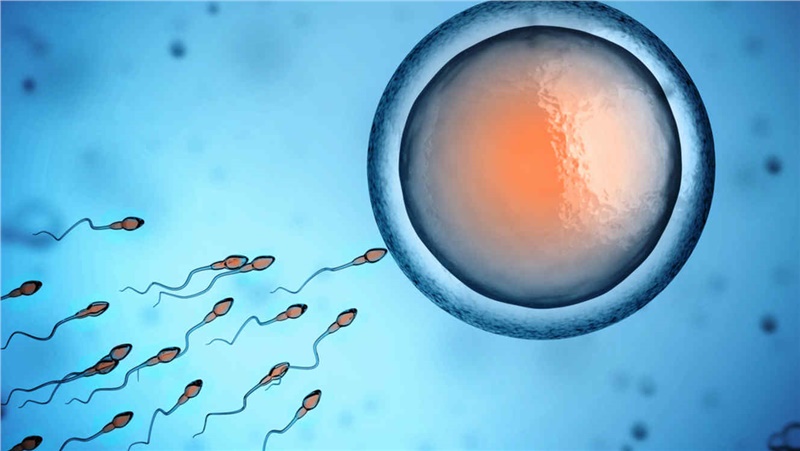IVF (In Vitro Fertilization) and Its Stages
In assisted reproduction methods, if the woman’s age is young and the sperm count and motility are sufficient, intrauterine insemination (IUI) can be attempted in the first stage. Intrauterine insemination begins with the washing of sperm in a laboratory setting. The washed sperm is allowed to concentrate and then, with the help of a catheter, is placed into the uterus. In cases where couples cannot conceive naturally after certain examinations, and when infertility cannot be explained, in vitro fertilization (IVF) is considered. In this stage, it can be said that intrauterine insemination is the first assisted reproductive method attempted. The goal of IVF is to increase the chances of the sperm and egg meeting. Before starting intrauterine insemination treatment, a sperm analysis, known as a spermogram, is performed on the male partner. In women, an evaluation is conducted based on a uterine film (HSG) and hormone analyses.
Conditions for Intrauterine Insemination:
- The uterine cavity should have a volume of at least 2.5 cm3.
- A uterine film or endoscopic techniques should demonstrate that the tubes are open.
- Ovulation should occur either through medication or spontaneously.
- After the preparation stage in the sperm analysis, there should be more than 1.5 million motile sperm.
- In summary, an adequate number of motile sperm, open tubes facilitating the union of cracked eggs, and an endometrium (uterine lining) allowing embryo attachment should be provided. The presence of a normal uterine insemination for this procedure is also one of the fundamental conditions. Situations where intrauterine insemination is not recommended include pelvic infection (PID), severe endometriosis (chocolate cyst), or damage to the tubes. After the initial evaluation and examination stage, controlled ovarian hyperstimulation is initiated.
Stages of In Vitro Fertilization (IVF):
- Development of Eggs (Controlled Ovarian Hyperstimulation): In short protocols, injections that assist in the development of eggs are typically started on the 2nd or 3rd day of menstrual bleeding. In long protocols, a treatment method that suppresses the eggs from the 21st day of the previous menstrual cycle is applied. In the IVF treatment performed by Dr. Müstecep Kavrut, if the results are appropriate, the treatment is started with the doses and protocols determined in the first stage. Three or four days after this process, the size of the follicles and the thickness of the endometrium (the inner lining of the uterus) are monitored by ultrasound. If necessary, hormonal monitoring can be added to the examinations.
- Collection of Eggs (Ovum Pick-Up – OPU): Approximately 36 hours after the egg-rupturing injection, eggs are collected through transvaginal ultrasound with mild anesthesia. This procedure takes about 15 to 20 minutes. Dr. Müstecep Kavrut prefers to perform this operation with mild anesthesia, ensuring that it is comfortable and painless. The day eggs are collected, sperm is also obtained from the male partner. On the same day, eggs are fertilized with microinjection. Each follicle with a diameter above 12 mm is pierced with a needle, and the liquid inside is aspirated. The aspirated egg is sent to the embryologist for confirmation. The collected eggs are then monitored in incubators, which are devices containing egg development fluids.
- Fertilization of Eggs with Sperm: Fertilization is performed using methods such as IVF (classic IVF) and Microinjection (ICSI or IMSI). The IVF method is applied to couples with a high number of eggs and normal sperm parameters. Specially prepared dishes containing a nutrient solution are used, and about 50,000-100,000 motile sperm are placed around the eggs. After this process, approximately 18 hours of waiting is required, expecting the sperm to fertilize the egg naturally. In the ICSI technique, this method is used for cases where there are abnormalities in sperm parameters. In this method, eggs and sperm are prepared separately, and then a single sperm is injected into each egg using microinjection.
- Embryo Transfer: Embryo transfer is the final stage of IVF, where embryos developed from fertilized eggs are placed into the uterus. Embryo transfer can be performed between 2 to 6 days after egg collection. If a sufficient number of embryos show good development, usually on the fifth day, a transfer is done at the blastocyst stage. By selecting embryos that are likely to implant, and after transferring a small number of embryos, the chance of achieving a pregnancy also increases. The success of the embryo transfer procedure is highly dependent on the woman’s age, ovarian reserve, the quality of eggs and sperm, the number of developing embryos, as well as the results of previous treatments and the condition of the uterine lining.
In conclusion, these are the key stages of in vitro fertilization (IVF), starting from the development of eggs through controlled ovarian hyperstimulation to the final stage of embryo transfer. Each stage is crucial for the success of the IVF procedure, and careful monitoring and evaluation are essential at every step.

